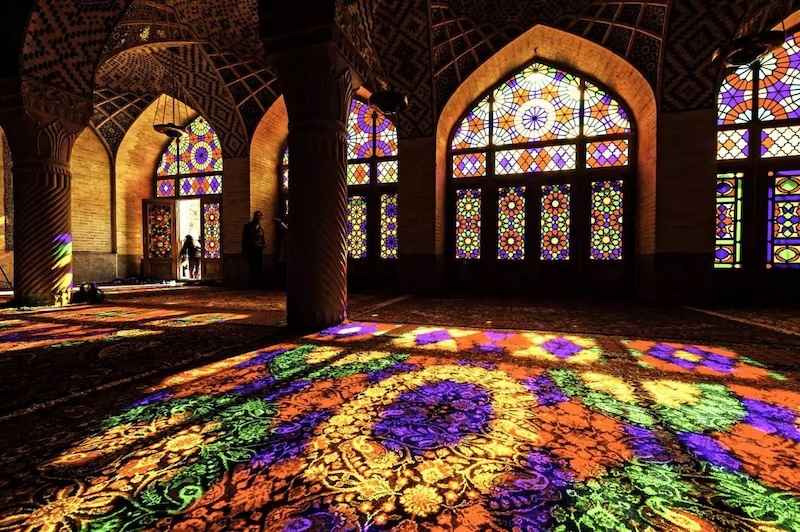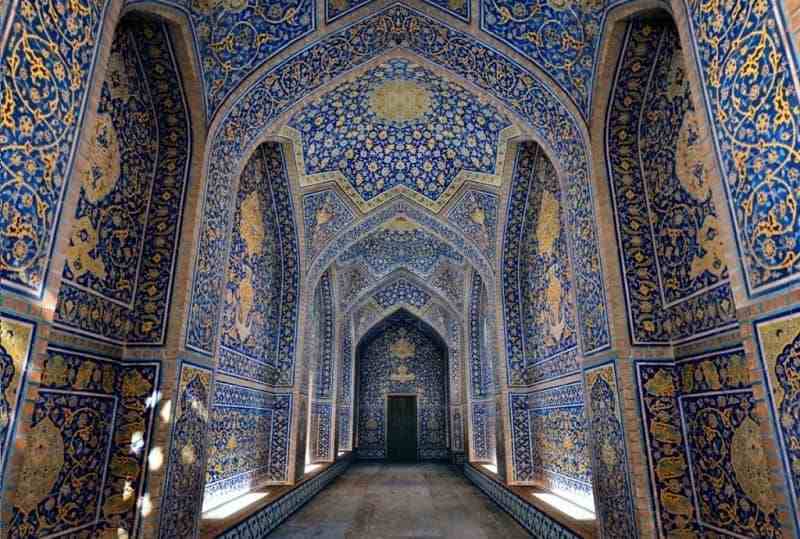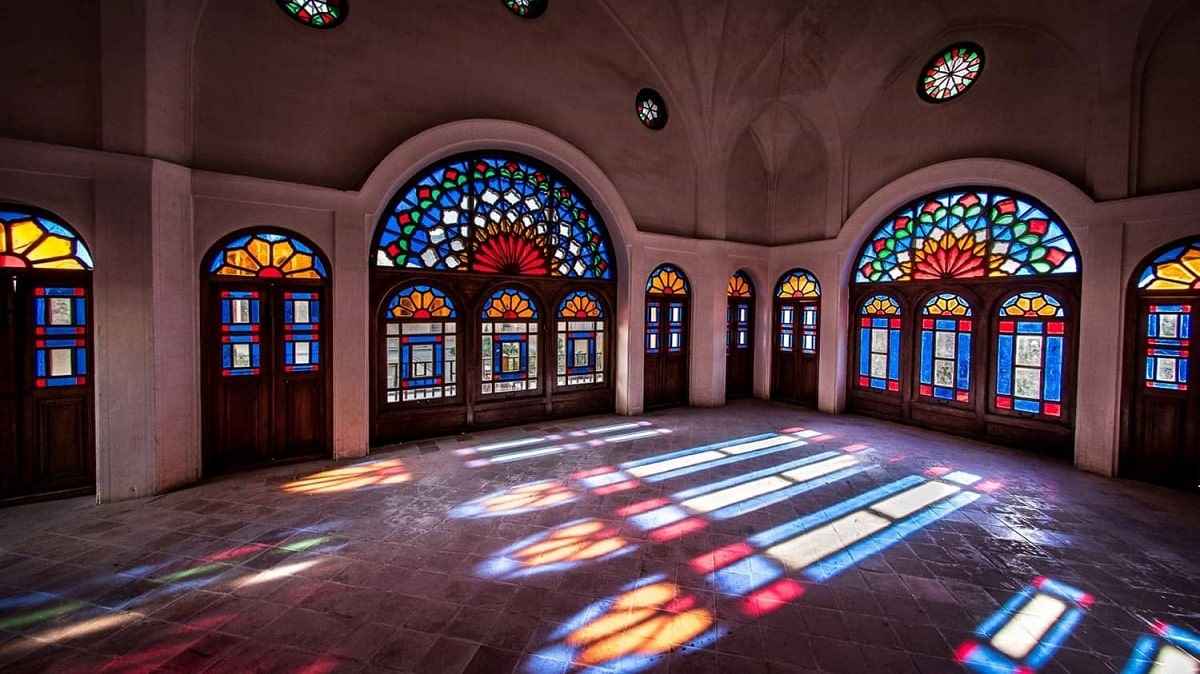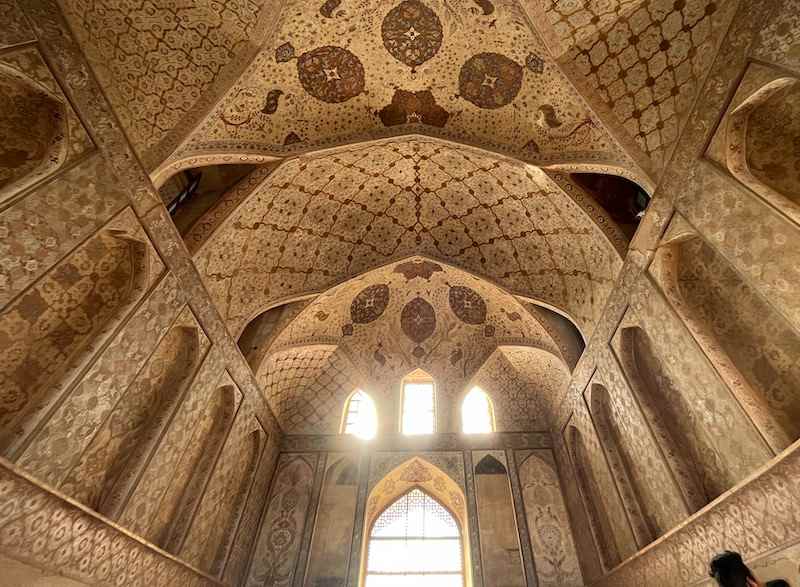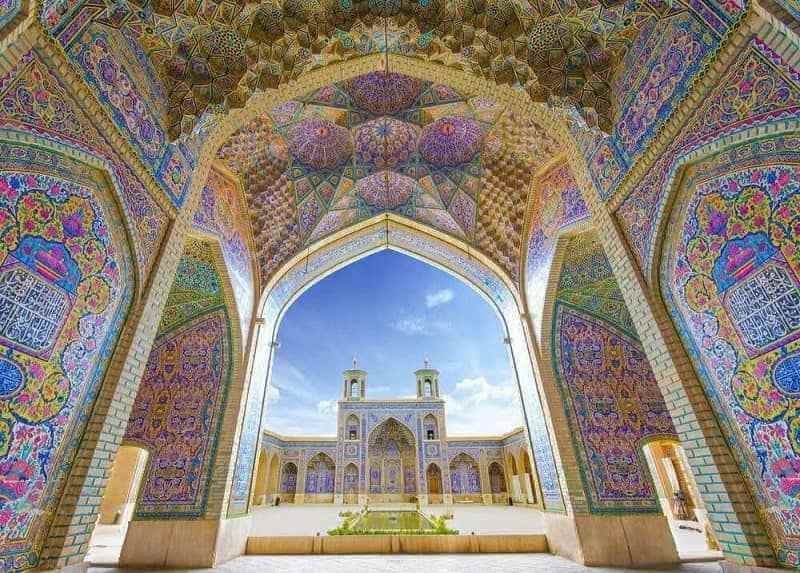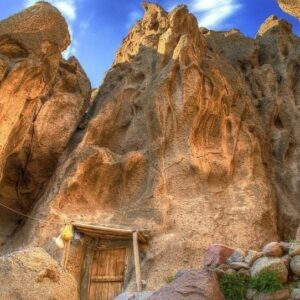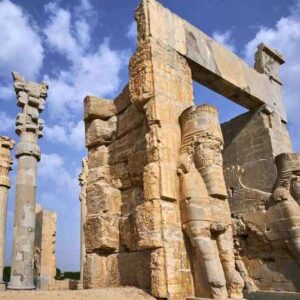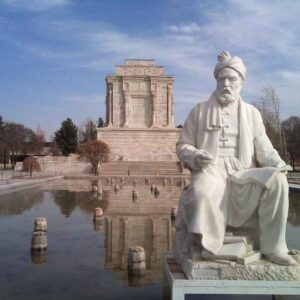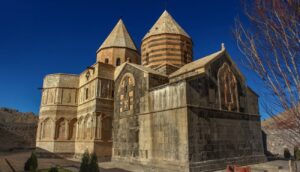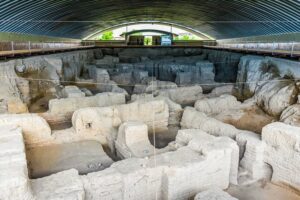Day 1: Tabriz (Arrival), Motherland of Azari Architecture
On the time of arrival at Tabriz Int’l Airport, our representative will welcome you. The tour guide will take you from the airport to the hotel. Let’s leave the pressure of flight under the shower and relax before the tour of Tabriz commences. Tabriz is the most significant region in the historic Azerbaijan area. It shows Azari culture, industry, modernity, and handicrafts. Tabriz’s history gained a huge impression from the Safavid Empire and the Qajar dynasty. However, most of the monuments and attractions prove the cultural and architectural heritage of those royal families. Also, UNESCO knows Tabriz as the world’s Carpet Weaving City.
Persian Architecture Tour begins with the cemetery of prose and poems (Tomb of Poets). There are more than 400 poets to shape the biggest dead poet society under a well-designed Tomb. After that, we visit Amir Nezam House, which shows us evidence of the contemporary history of Tabriz. It is a Qajar Museum now. Then, we drive to El Goli Garden which embraces a large artificial pond and a mansion in the middle to have a relaxing evening. (Today’s tour depends on the time of arrival)
Overnight Tabriz.
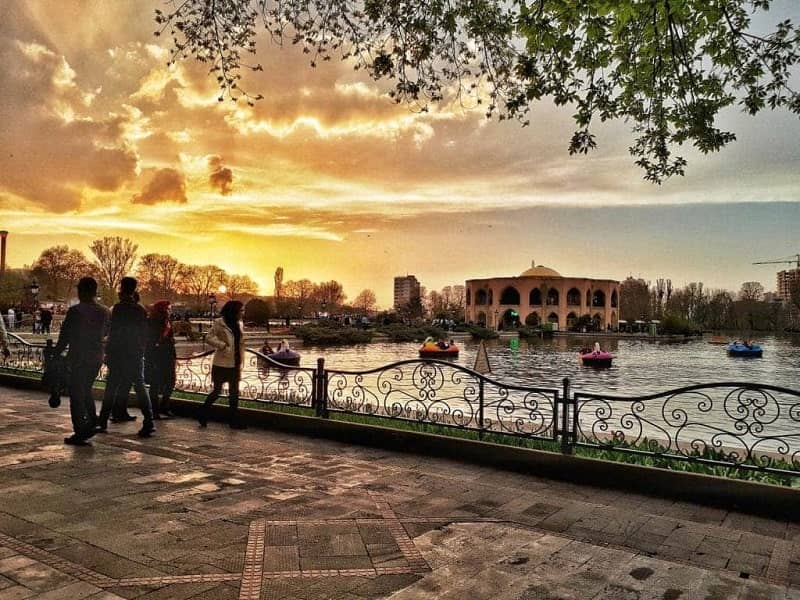
Day 2: Tabriz, Identifying Persian Architecture in Bazaar Design
Persian Architecture Tour starts with the Blue Mosque, a witness to the history of the city since the pre-Safavid era. Good to know that the blue tiles at the grand entrance of Iwan caused the name of the monument. Most parts of the Blue Mosque were destroyed in a late earthquake. But, famous architects reconstructed the majesty of the mosque during the Pahlavi dynasty. After that, we walk to the Azerbaijan Museum which takes you on a tour through history. There are archaeological finds that date back to 5000 B.C. to the Sassanid era. Then, we will continue to visit Islamic seals and coins. Soon after, we take a walk to the Iron Museum which demonstrates astonishing sculptures by a contemporary Artist Mr. Ahad Hosseini.
The Largest Roofed Bazaar Architecture
Then, our exploration continues with the Constitution House of Tabriz. It was a prominent pivot of revolutionary communities around 100 years ago. The house is a museum of revolutionary activists’ sculptures and their legacies such as letters and weapons. Next in order of time, we wander at Tabriz Grand Bazaar (UNESCO Heritage). The bazaar embraces a spectacular structure that includes many sub-bazaars as the largest roofed Bazaar in the world. It proves itself as a cultural, economic, and political center of the city. Tabriz Grand Bazaar is home to Tabriz Kilims and Rugs that shine like a diamond by their world reputation. Artists weave orchards onto the kilims and rugs with colorful designs. It lets users feel softness and freshness under their feet.
Overnight Tabriz.
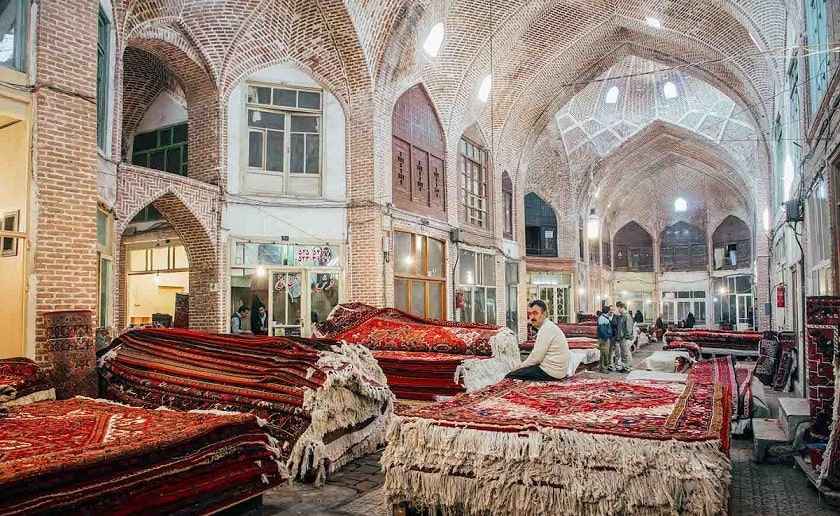
Day 3: Tabriz, Volcanic Persian Architecture Majesties
Today, the Persian Architecture Tour takes us on an expedition to Kandovan village. Unbelievably, people build their cone-shaped homes in volcanic rocks to verify human integration with wild nature. The incredible village lifestyle in cave-like houses amazes visitors with identifying architecture. In Kandavon, locals have been living with ancient customs in the modern era. Purchase handicrafts in local settlements to experience the alive Kandovan lifestyle. Also, walk through the rocky pathways to enjoy the mesmerizing environment of the Kandovan Village. After tasting Azari cuisine in the Kandovan village, drive back to Tabriz.
Overnight Tabriz.
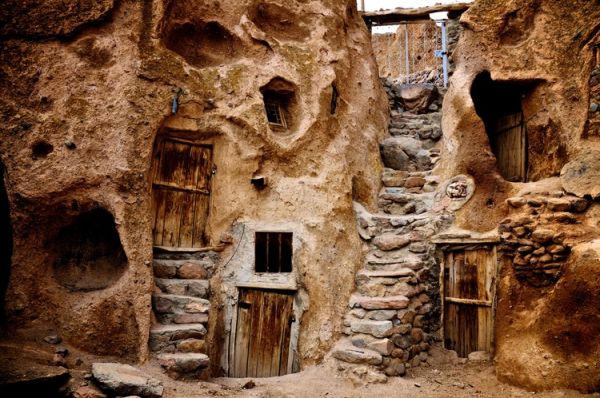
Persian Architecture of Tabriz Historic Houses
Persian Architecture tour directs us to see masterpieces left from the Qajar and Pahlavi dynasties. These old survivors will remind us of the old times of Tabriz. No matter how attractive and captivating modernity is, it will not be able to compete with the warmth and intimacy hidden in the walls of old houses. Some of them keep such rich history within so people turned them into museums. Now, those museums narrate the events of Iran, especially Tabriz. We will visit Behnam and Heidarzadeh’s house to get more knowledge about Iranian contemporary architecture. Those Tabriz Historic Houses embrace below features that make us visit them:
- European-style marble columns and capitals
- Old mirrors with elaborate and delicate beds
- English and French landscaping with large areas of lawn, ornamental and shrub trees. Also, small and large rectangular ponds, flower gardens, and general lines of landscaping.
- Murals with themes such as historical events, portraits, paintings, and landscapes, cover all the interior surfaces of the walls.
Overnight Tabriz.
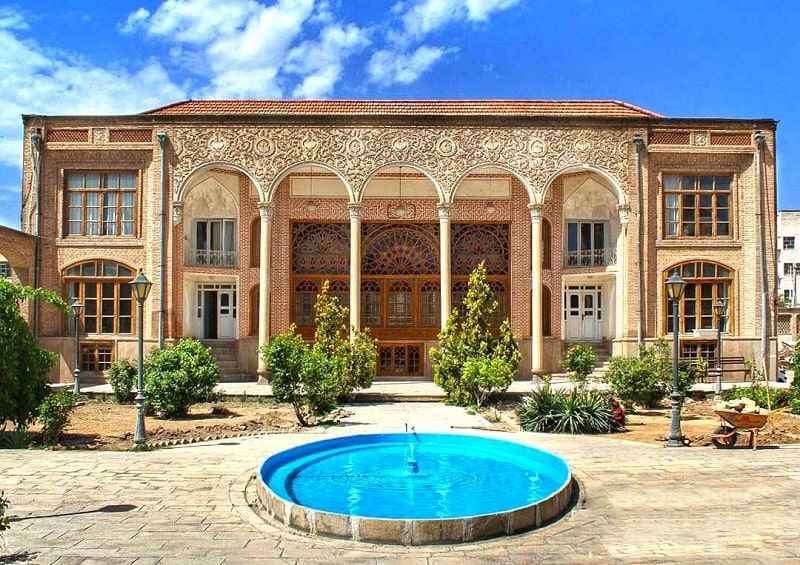
Day 4: Tabriz-Zanjan, Safavid and Timurid Architecture
Persian Architecture Tour takes us to the natural sceneries of Iran on the way to Zanjan. Firstly, we will move to Ardabil which is the motherland of Sheikh Safi-ad-din Ardabili. Sheikh is the founder of the Safavieh order. Today embrace the Safavid Dynasty Foundation by visiting the Safi-ad-din Ardabili Tomb (UNESCO Heritage). He was Murshid of Sufism and his beliefs and ideology created the Safaviyya faith in Persia. The Complex includes a Khanghah, a Mosque, and a courtyard, which shows different aspects of Sufism.
Perso-Islamic Architecture Wanders
Sheikh Safi al-din Khanegah is one of the most amazing manifestations of Persian art. The tomb is the largest, most complete, and most prominent house. The tomb is an incredible feature of Persian architecture (patriarchal and Timurid). It is so inspired by Sufism. The Sheikh’s tomb is 8-cornered on the inside and cylindrical on the outside. The original dome of Allah is an 8-cornered building with a turquoise dome on which the word Allah is engraved several times. The tomb of Sheikh-Safi-Al-Din shows itself under the dome. After visiting the tomb, we will drive to Zanjan to gain better knowledge about Persian architecture and lifestyle.
Overnight Zanjan.
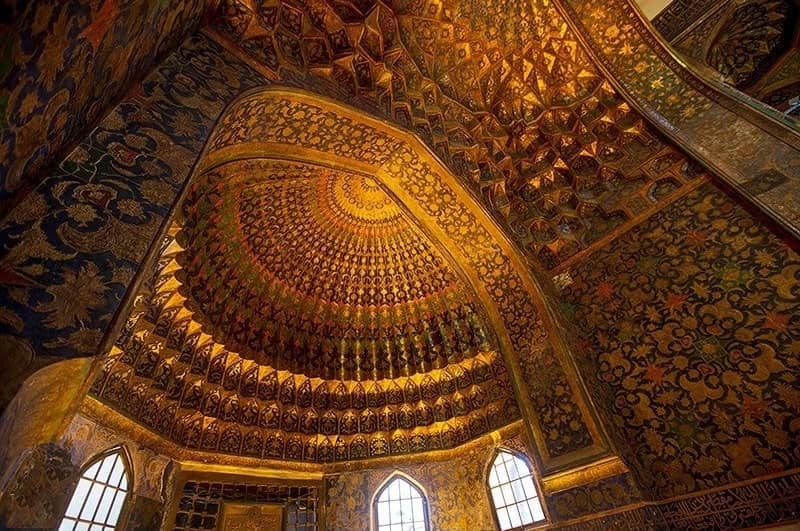
Day 5: Zanjan-Qazvin-Tehran, Route of Azeri to Persian Architecture
Zanjan is one of the happiest provinces in Iran with a dreamy view of natural inland sceneries. The Persian Architecture tour continues with a workshop to experience Malileh handicrafts. It is a handmade souvenir that UNESCO World Heritage registered as an intangible cultural heritage. Artists craft objects out of silver to create Malileh.
On the way to Qazvin, the Persian Architecture tour directs an expedition to the Dome of Soltaniyeh (UNESCO Heritage). It is a well-known structure in terms of architecture and spirituality which is also Tomb of Oljeitu. The Mongol Dynasty built the dome during the Ilkhqnid period in Persia. It is the largest brick dome with 49 tons of weight in the world. Also, Soltaniyeh Dome is the third one of its kind after Florence Cathedral and Hagia Sophia. After that, we will embark on a full-day visit to Qazvin.
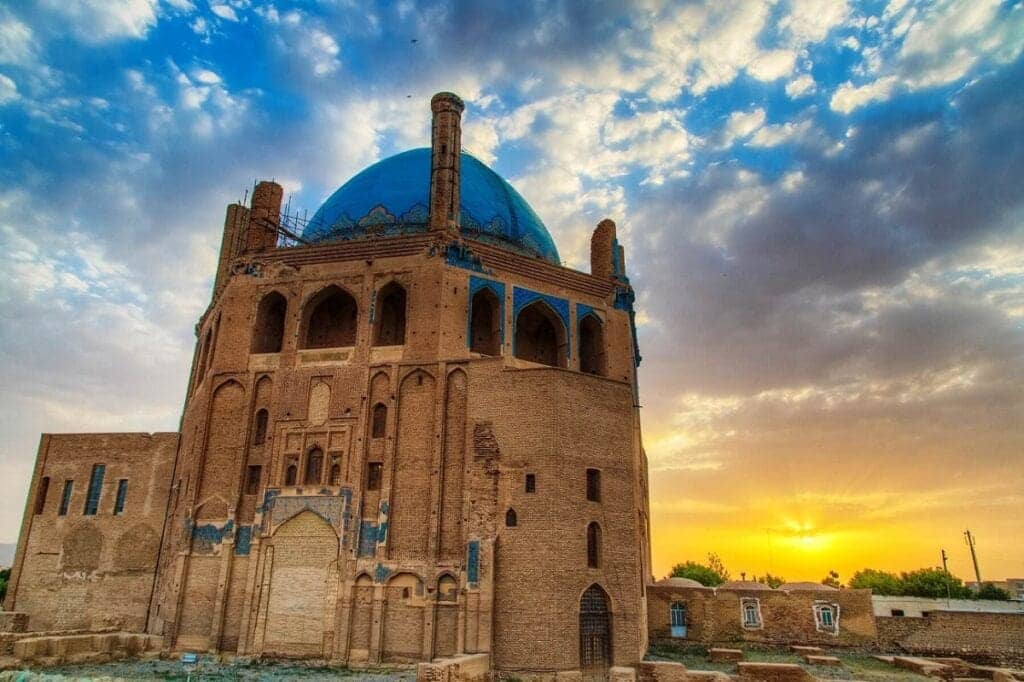
Qazvin, Land of Culinary Art and Architecture
Qazvin is famous for the cooking art of jeweled rice meals such as Morasa Polow. Let’s taste a colorful garnished rice dish to experience the incredible taste of Persia. Then, we walk to Chehel Sotun Pavillion, the one Shah Tahmasp Safavid built during Safavid rein. Next in order of time, we reach the majesty of the Qajar Dynasty, which is undoubtedly the best-preserved caravanserai in Persia. Saad al-Saltaneh Caravanserai is the largest urban one of its kind. The architecture consists of Iwan, Hojre (Travelers’ room), Dome, and courtyards. It used to provide a relaxing atmosphere for travelers and traders. Also. Saad al-Saltaneh Caravanserai (UNESCO Heritage) is the real meaning of Persian architecture in urban art.
Overnight Tehran.

Day 6: Tehran, Touch Persian Architecture Contemporary Heritage
Tehran is the most modern city and capital of Iran. It clearly shows the classical and modern combination of Persian culture. Tehran embraces cultural & natural landscapes with the brilliant glory of palaces and distinctive museums. The Persian Architecture Tour starts with Golestan Palace (UNESCO Heritage). It is a royal complex over 400 years old as a brilliant historical monument of Tehran. Golestan Palace‘s peculiar ornaments such as tiling, mirror-works, and paintings, surpassed the four kings crowned in its majesty.
Walk Through Iran’s Royal and Ancient History
After that, (Sat to Tue 14:30 to 16:30) we will walk to the Treasury of the National Museum (National Jewelry Museum). It shines for the beauty of the diamonds, jewels, and illustrious royal heritages. In the evening (if the National Jewelry Museum was closed) we keep traveling deep into Persia by visiting Iran National Museum. It is a cradle of Persian stories that holds archaeological collections in two separate structures. They are the Ancient Iran Museum and the Museum of the Islamic Period. The museum presents you with the culture, art, and history of Iran.
Overnight Tehran.
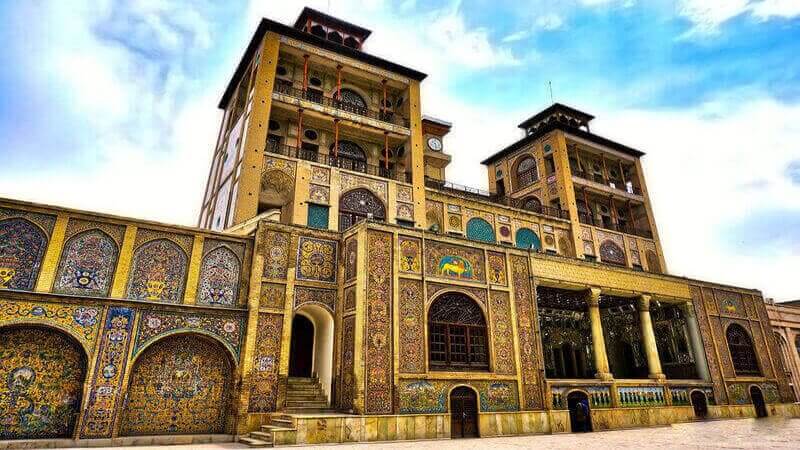
Day 7: Tehran, Modern Iranian Architecture
The Persian Architecture Tour will take you to the Sa’ad Abad Complex which lies at the base of the Alborz mountain range. The complex boasts a lush green environment and delightful weather, making it a royal residence for two dynasties. Saad Abad Palace is home to palaces, museums, and galleries that showcase Iran’s contemporary era in great detail. Afterward, we will visit the holiest shrine in Tehran, Tajrish (Imamzadeh Saleh), which provides a spiritual experience. It is located close to the traditional Tajrish Bazaar, where you can learn more about the traditional Persian way of life. We will then take a stroll down the longest street in the Middle East, which is adorned with trees and leaves, and head south to the Nature Bridge. Nature Bridge (Tabiat Bridge) is a symbol of modern Persian architecture that connects two parks above a highway in Tehran.
Overnight Tehran.
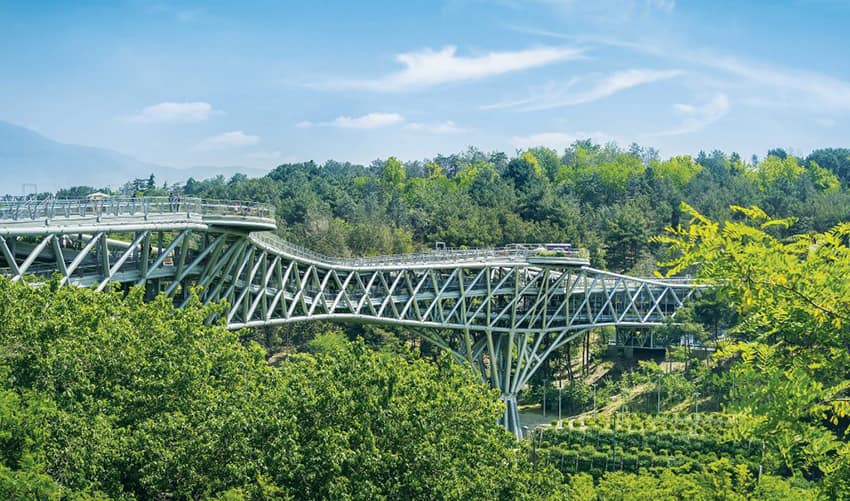
Day 8: Tehran-Kashan, Persian Architecture in Houses and Gardens
Today, the Persian Architecture Tour devotes itself to Kashan legacies that begin with Fin Garden (UNESCO Heritage). It depicts a genuine paradise, telling us stories about Iran’s contemporary era and ancient architecture. After that, we will visit Boroujerdi House which combines the desert style of wind-catchers with Persian traditional models of iwan. Boroujerdi House consists of superb plasterwork in interior and exterior decoration. Soon after, we will touch Sultan Amir Ahmad Bathhouse to feel Persian architecture in a traditional bath. Next in order of time, we walk to Tabatabaee House which is an incredible type of Persian house. Tabatabaei House shows Iranian art with its stone reliefs, stucco, and colored glasses. Finally, we travel to visit Agha Bozorg Mosque which is the only one in its model as a mosque with a sunken courtyard.
Overnight Kashan.
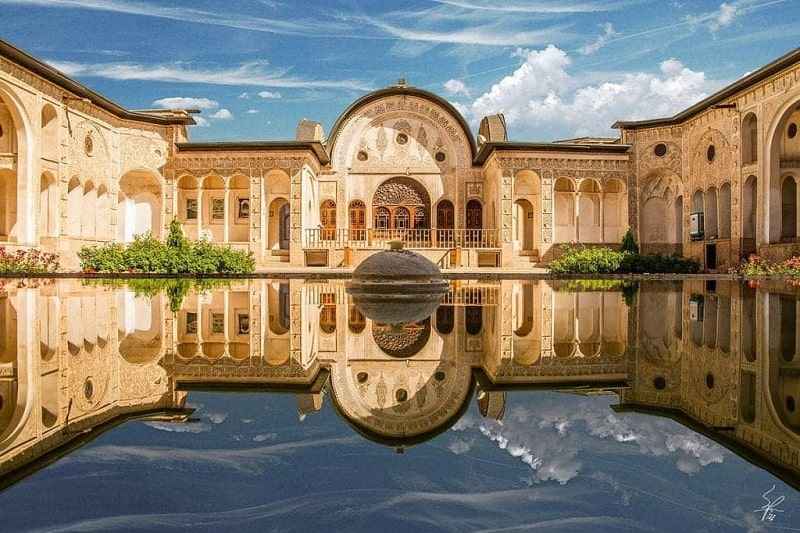
Day 9: Kashan-Isfahan, Rural Persian Architecture
Persian Architecture tour continues with Aminodole Caravanserai at the center of Kashan bazaar. It is a coherent form of structure that reflects the cultural and economic hub of the city. After that, we will have an expedition to Abyaneh village to experience one of the ancient rural areas in Iran. Abyaneh village shows historical traditions and customs along with distinctive habitable buildings.
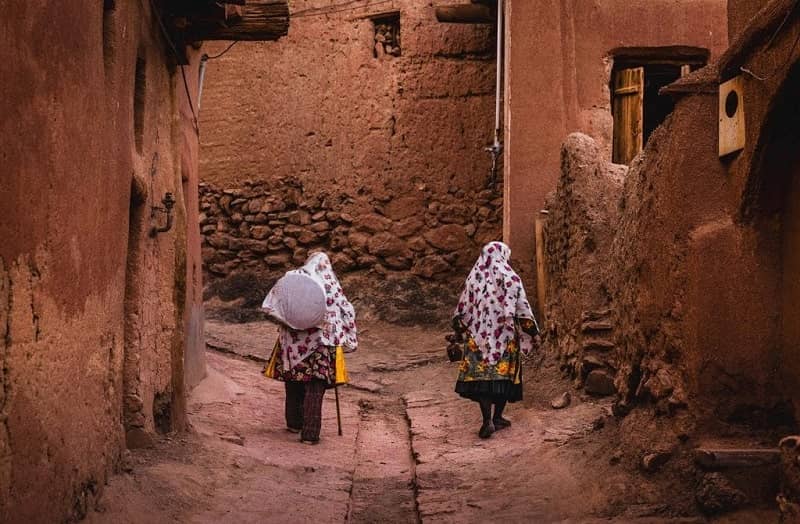
Perso-Islami Architecture Capital
Finally, we travel to the capital of Perso-Islamic Architecture. We touch Isfahan by sensing the white river to indulge ourselves in the beauty of Khaju Bridge. The architectural, tiling, and painting style of the Khaju Bridge is a global masterpiece. As well, walking on Khaju is one of the most enjoyable tourist activities in the evening in Isfahan.
Overnight Isfahan.
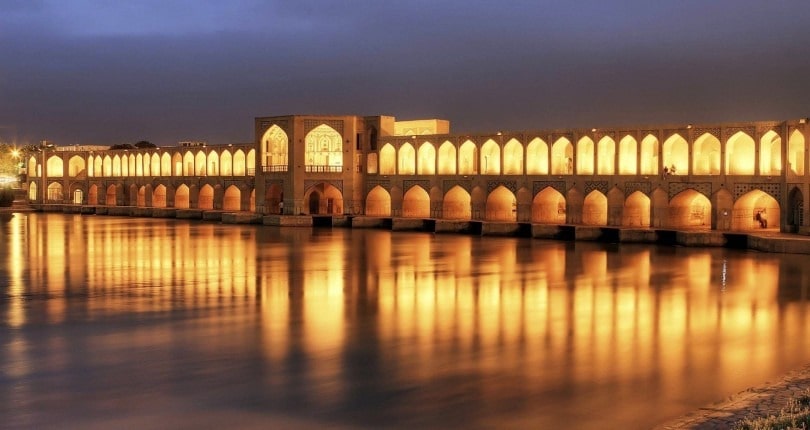
Day 10: Isfahan, Capital of Persian Architecture and Art
Isfahan, the city of glories and Perso-Islamic masterpieces devoted itself to craftsman’s heritage. It is the center of art, not only in architecture or handicrafts but also in urban structures and music. Isfahan is a treasure of mosques, cathedrals, mansions, bridges, and gardens. Persian Architecture Tour through Isfahan begins with a three-floor Gate. Qeysarieh Gate is in remembrance of Shah Abbas King as the main entrance to Isfahan Grand Bazaar. It directs us to Naqsh-e Jahan Square (Meidan Emam) to visit the masterwork of chief architect Sheikh Bahaee.
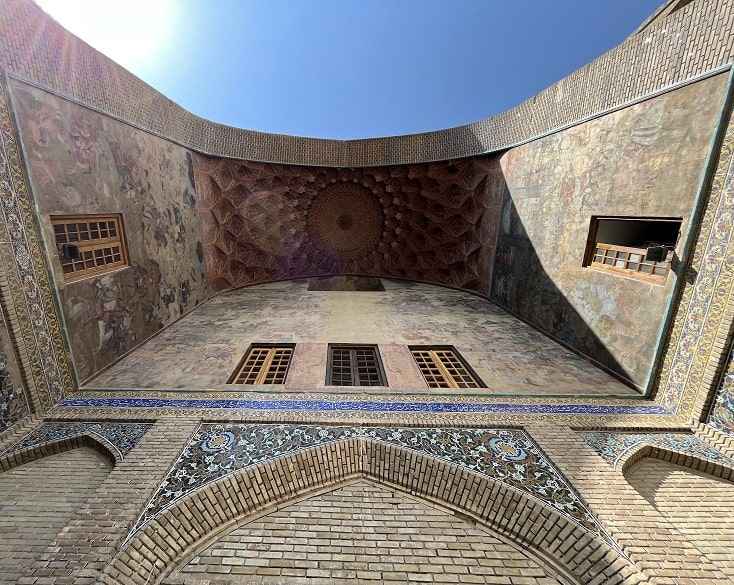
Artistic Gallery of Persian Genius Crafts And Royal Heritage
We will start visiting the genius heritage of the Meidan with Sheikh Lotf Allah Mosque (UNESCO Heritage). It amazes visitors with the genius interior and exterior decoration of the hall, dome, and Shabestan. Sheikh Lotf Allah Mosque was a royal mosque dedicated to Shah Abbas Safavid Harem. Then, we will have a workshop on the art of Minakari. It demonstrates to us how ancient Persians enameled objects to place heaven into them. In Minakari, artists decorate metal (mostly Silver and Copper) or tile with patterns and paintings. Soon after, we will visit the Shah Mosque (UNESCO Heritage), which is the real meaning of Persian architecture and art in the Islamic era. It consists of iwans, domes, tilling, and supreme engineering of a voice echoing. Finally, our trip to the square will end at Ali Qapu Palace (UNESCO Heritage). It is a gallery of art in terms of music, painting, and decoration in an acoustic structure.
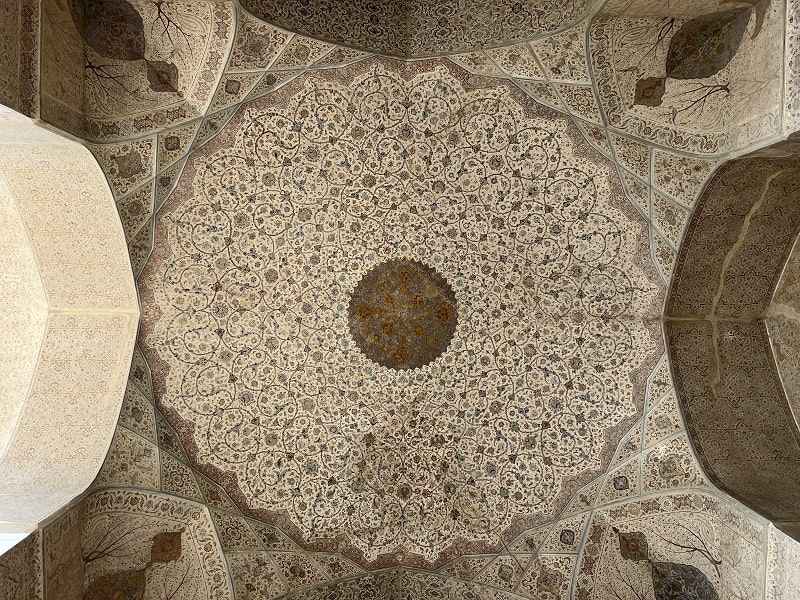
By nourishing our minds in the square, we will walk to Chehel Sotun Palace (UNESCO Heritage). it is a relaxing atmosphere with gorgeous paintings awaiting us. Chehel Sotun Garden pillars photo reflected into the front pond and makes an unbelievable picture. Then, we will travel to the white river to indulge ourselves in the beauty of the worldly known Si-O-Se-Pol Bridge.
Overnight Isfahan.
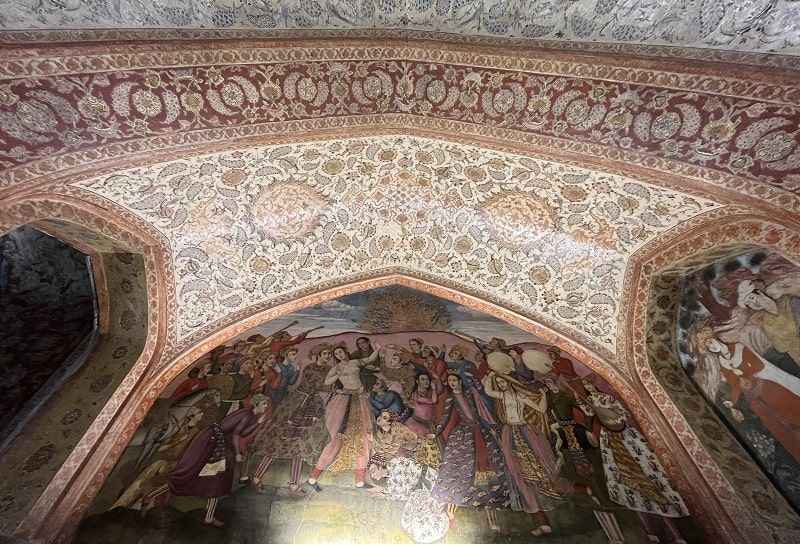
Day 11: Isfahan, UNESCO Creative City and Center of Perso-Islamic Art
Today, the Persian Architecture Tour includes Vank Cathedral with its fascinating paintings and mosque-like dome. Shah Abbas Safavid forced Armenians to move to Isfahan and they constructed such an artistic gallery as a holy place. After that, we will travel to Isfahan Jameh Mosque (Masjed-e Jame of Isfahan) to discover a unique practice of designing a holy place. Masjed-e Jame Isfahan is the remains of a fire, even narrations of a house of worship for Zoroastrians. Isfahan Jameh Mosque’s (UNESCO Heritage) magnificent turquoise dome shines like a diamond in the south of Isfahan. Isfahan Jameh Mosque is a unique holy place for the renovation and reconstruction of one of the oldest mosques in Iran. Then, we will learn how masters do Ghalamzani to create outstanding works with superb designs on silver, copper, brass, and gold. Artists place visionary engravings on objects to create Ghalamzani handicrafts.
Our exploration continues to Chahar Bagh Street which is a masterpiece of urbanism to Hasht Behesht Palace. The palace used to be a royal pavilion with glamorous paintings, woodwork, mirror-work, and tilling. Then, we touch Monar Jonban, an unbelievable structure that the Ilkhanate dynasty built. It is an architectural masterpiece as a result of minarets oscillation.
Overnight Isfahan.
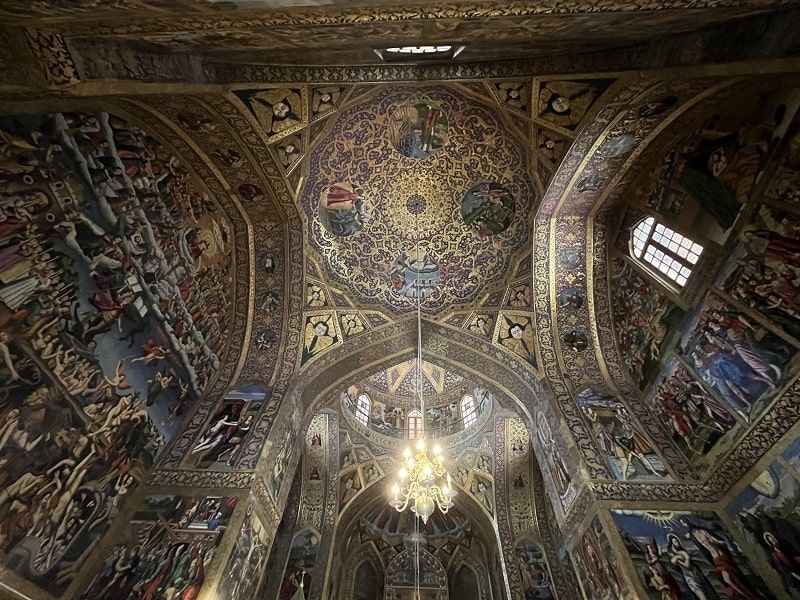
Day 12: Isfahan-Yazd, Persian Architecture Through Deserts and Water
Persian Architecture exploration continues to Naein County. The county is an ancient region famous for the qantas, handicrafts, and castles. We visit Naein Jameh Mosque which is one of the four mosques built soon after the Arabs’ conquest of Persia. After that, we will learn better about desert citizens’ lifestyles by surfing the Desert Anthropology Museum. Then, we travel to Rigareh Qanat-based Water Mill to investigate how people quench their thirst by constructing qanat underground since 1000 B.C.
Persian Architecture tour creates a full-day journey into the heart of the desert on the way from Isfahan to Yazd. There will be an expedition to Maybod County to explore desert-based architecture and handicrafts north of Yazd. Our visits will include Abbasi Caravanserai which displays how travelers used to take a rest on the way on their business trips. After that, we take a walk to the traditional Water Reservoir which plays a vital role in providing safe and clean water in the desert. Soon after, we have a glance at the Ice House which feeds the county with sufficient ice from winter to summer. It is an evaporation engineering masterpiece since 1000 B.C. Finally, we visit Narin Castle, which used to be a fortress during existence, dating back to the Achaemenid era.
Overnight Yazd, (B, L, D).
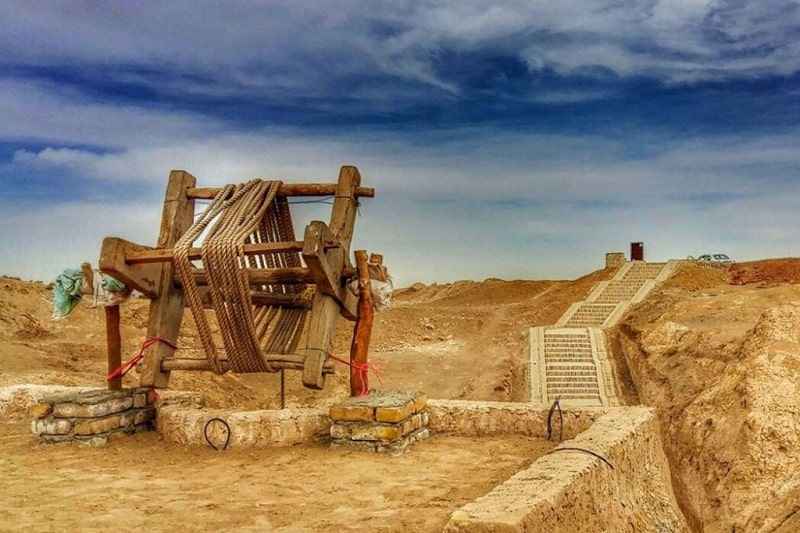
Day 13: Yazd, UNESCO City of Desert Architecture
Yazd is a city that displays human adaptation to the hard natural desert through its unique architecture. Yazdi people use simple materials to build astonishing structures such as wind-catchers, baths, mosques, and houses. Those masterpieces preserve the residents’ lives in the heart of the desert through the art of architecture. As an example, qanat construction is an ancient engineering knowledge that conveys water from natural sources to quench people and farms. The is the home of Persian sweeties and a famous land in handicrafts. Also, religious diversity enlightens you about Zoroastrians, Jews, Christians, and Muslims in Yazd.
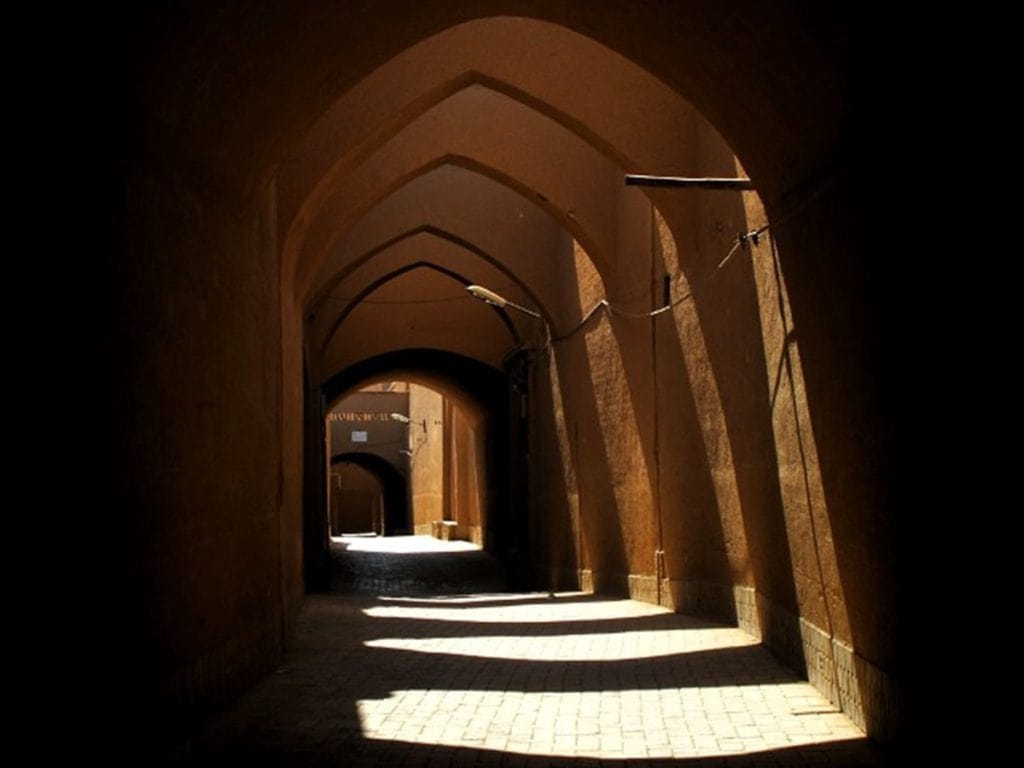
Firstly, we walk through Cashmere Fabric (Termeh) street as the emanation of art in warp and weft of cloth. Some believe that the age of Termeh goes back to more than 500 years ago. Yazdi people make Termeh out of wool and silk. at the end of the street, we will reach the old town of Yazd. Persian architecture tour in the oldest district of Yazd begins with Yazd Jameh Mosque. The brilliance of tilling dazzles eyes next to the highest minarets in Iran. Yazd Jameh Mosque depicts harmonious crafts between Islamic and Persian architecture.
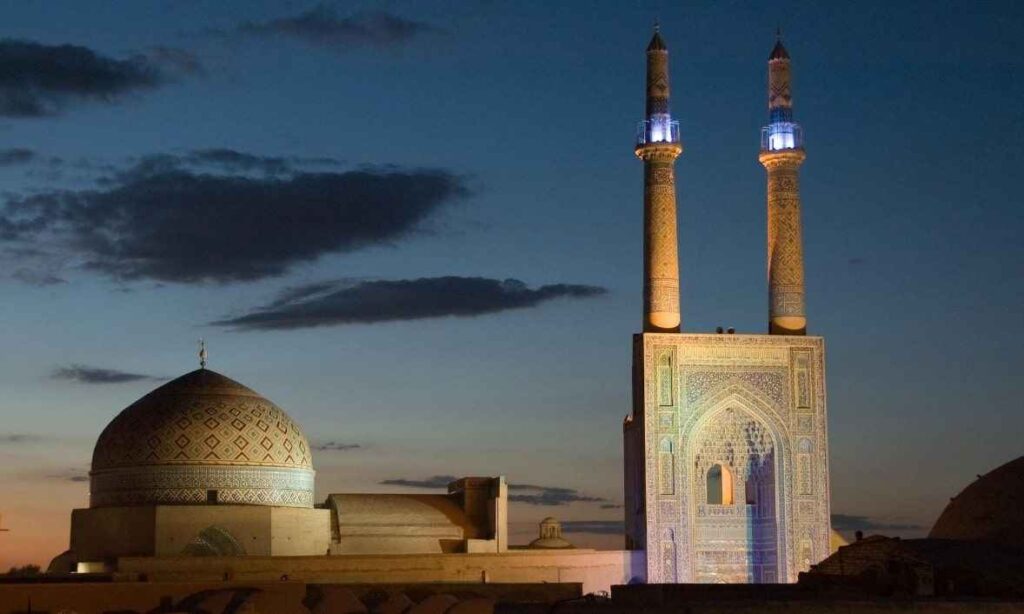
Brick and Mud Architecture
Persian Architecture and art make us walk to the Fahadan area (UNESCO Heritage). Let’s explore the brick-and-mud lifestyle with a particular style of houses, gardens, and buildings. The Fahadan area brings ancient customs and traditions to the city. Then, we will reach Alexander Prison on the way to Fahadan Paint Shop. We will have a glance over Yazd handicrafts and purchase souvenirs. Soon after, we walk to Lariha House to capture a view of desert art in a well-decorated location. The house embraces architecture of wind-catchers, archways, plaster-work, and stained-glass windows. Finally, we will visit the Zoroastrian Fire Temple. It is continuously burning for around 2500 years.
Overnight Yazd.
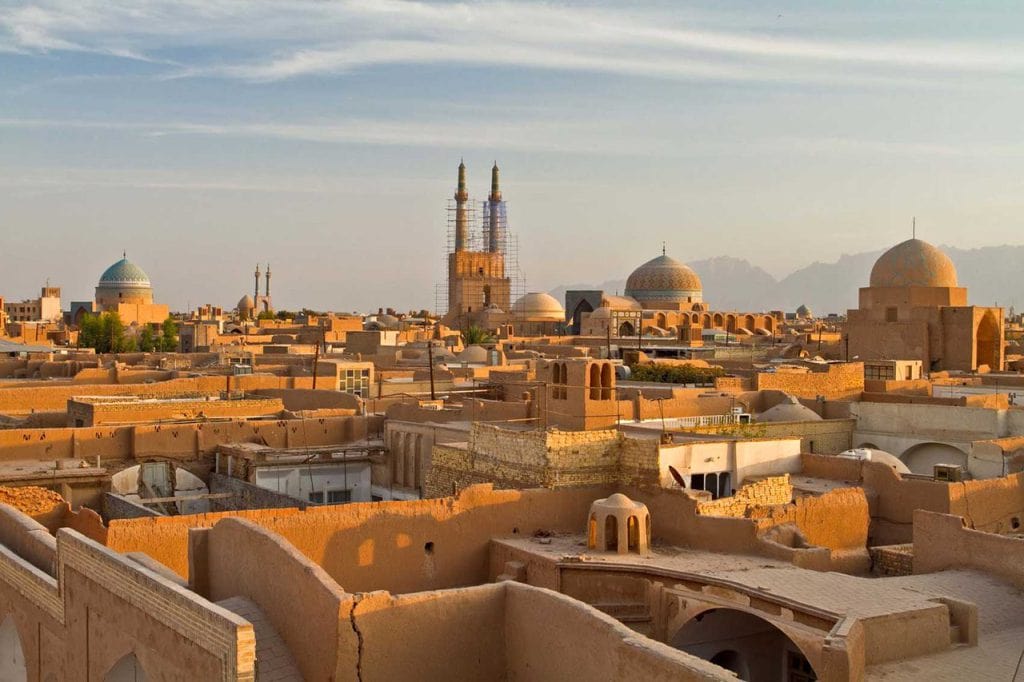
Day 14: Yazd, Art of Gardening, Watering, and Cooking in Desert
Persian Architecture exploration continues to the Amir Chakhmagh Complex with its gorgeous balanced submerged alcoves. After that, we will taste ice cream and purchase Sweeties such as Qottab, Loz, Baklava, and Yazdi Cake. Soon after, we will take a walk to the Water Museum to experience how people adapt themselves to the desert situation and water shortage. Then, we will visit Khan Bath in the Khan complex. It includes a school and a bazaar. Also, we will serve our lunch in a cozy location with Yazdi-style architecture in Shah Neshin (King Seat) and Khazineh (Water reservoir) of the bath.
Next in order of time, we pass Yazd Sabats to explore the shaded area with distinctive architecture. Finally, we will experience a traditional form of athletics exercise used to train soldiers for warfare in Zourkhaneh (Pahlavani Rituals). Today Persian Architecture Tour ends with having a pleasing night in a calm atmosphere. We will move to the highest wind-catcher in the world with peculiar architecture in Dowlat Abad Garden (UNESCO Heritage).
Overnight Yazd.
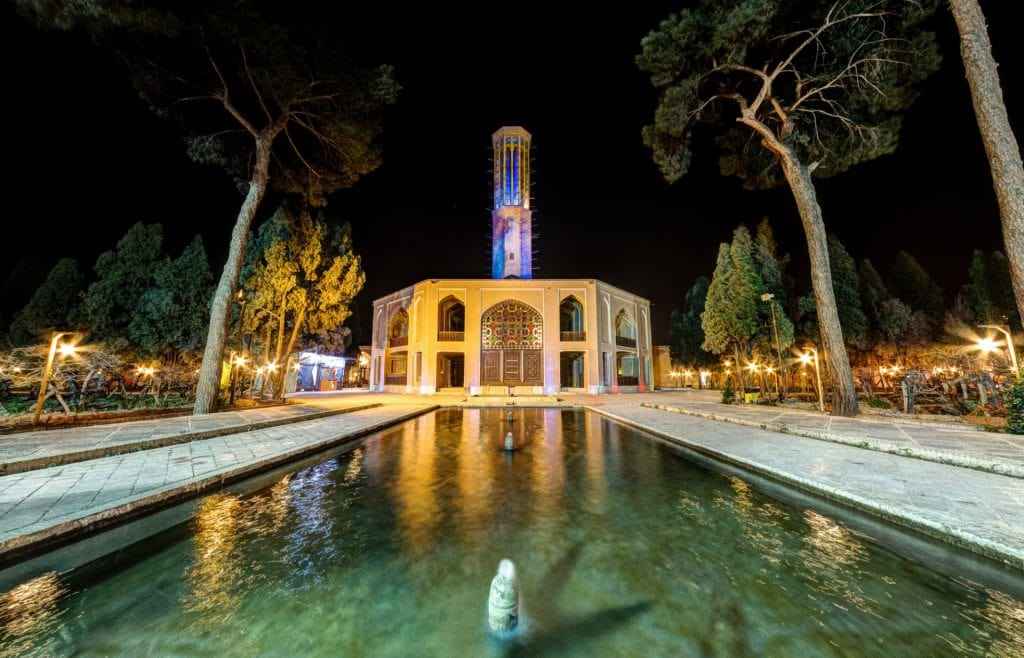
Day 15: Yazd-Shiraz, Gate of Royal Persian Architecture
Departing Yazd, we travel to Shiraz on an expedition to Abarkooh County to wander at the 4500-year-old Cypress Tree. Soon after, the Persian Architecture Tour takes us to the Global City of Wood Carvings to discover the very skillful art of Monabatkari or Moghaarkari. In Monabatkari, professionals replete woods with religious designs or flower motifs in their workplace.
Road to Achaemenid Empire Heritage
Shiraz is the city of ancient majesty of Persia. Achaemenian’s and Sassanian’s glories are the heritage of the city of prose & poem, gardens, and flowers. Historical ornaments such as Persépolis and Pasargadae are spread through the tale of the province from 2500 years ago. Also, spirituality is always associated with the story of the people, not only during Zoroastrianism but also at the time of Islam to the present era.
Achaemenid legacies shine like diamonds in the ancient and modern world. Though, the majesties narrate stories of the ever-greatest empire on earth. So, the Persian Architecture Tour directs us to Pasargadae, the ancient capital of Achaemenid. Cyrus the Great ordered the building of Pasargadae as a great heritage of ancient Persian architectural heritage. Pasargadae (UNESCO Heritage) used to be the capital of Persia during Cyrus the Great. There are royal palaces, a famous fourfold Persian model of the garden, and his necropolis. Then, we will have a glance at Quran Gate, which is the entrance gate of Shiraz from the north. Zand dynasty built the gate for passengers blessing with the holiness of the Quran. Next to the gate is the Tomb of Khwaju, who was the guru in literature, and also a guide to Hafiz.
Overnight Shiraz.
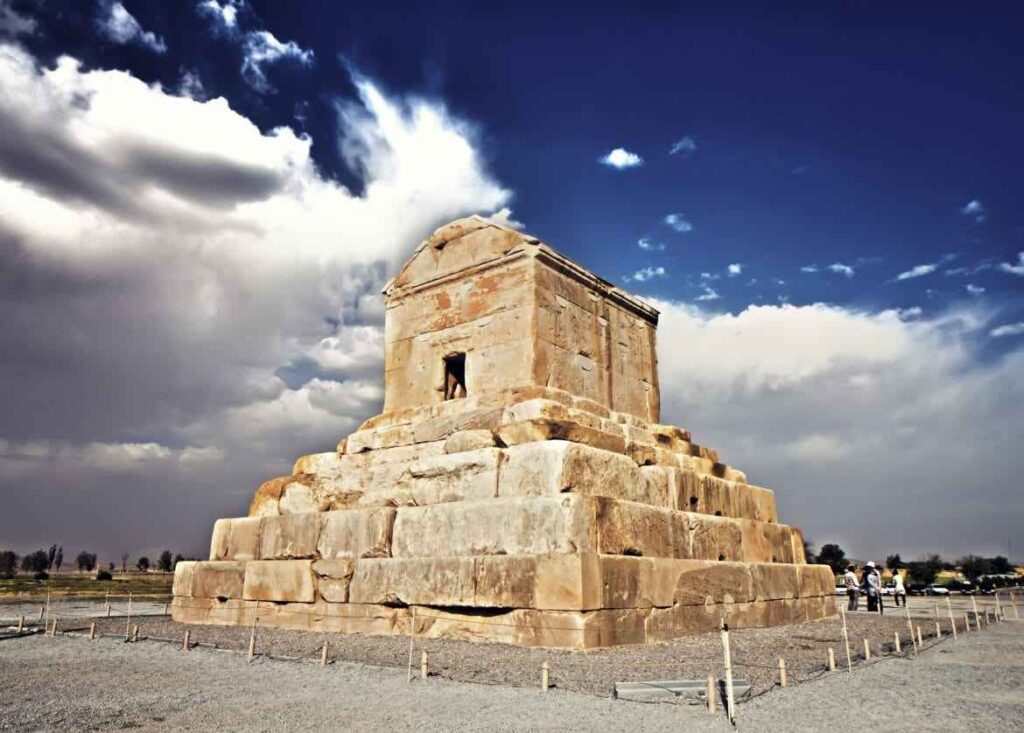
Day 16: Shiraz, Deep in Colors
Zand Dynasty Heritage
Today, the Persian Architecture Tour devotes itself to the contemporary art of Iran. The journey begins with Karim Khan Citadel a residence for Karim Khan Zand and his family. It was also a military center and the structure looked like a castle guarding the royal family and the king. Soon after, we take a walk to Kolah Farngi Mansion to experience the ceremonial palace of the Zand Dynasty. After that, our visits include the Vakil Historic Bath, which is an architectural masterpiece in the Vakil Complex. The building materials are gypsum, stone, and brick. Then, we keep walking to Vakil Mosque to experience a royal holy place. Vakil Mosque derives its fame from the art of architecture, calligraphy, and columns engravings. It is also an entrance door to the Vakil Bazaar. We will be amazed by the passageways, experience Shirazi nomads’ and tribes’ clothing, and purchase handicrafts.
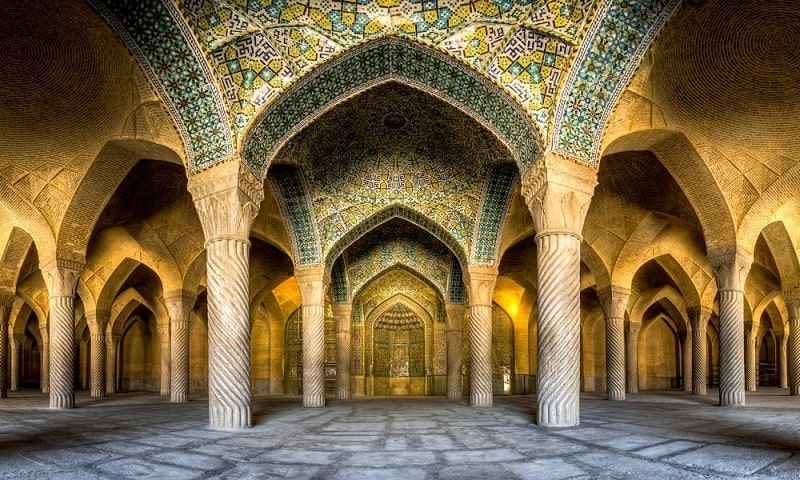
Qajar and Pahlavi Dynasties Heritage
The journey continues with a gourmet taste of contrast in flavors. Sour Cherry Rice, a traditional Shirazi dish, is a great example of such contrast. On one hand, you can taste the sweet flavor, and on the other hand, you feel the sour taste. Then, we go to Qavam House (Narenjestan Garden), a unique model of Persian architecture. It depicts most of the artistic value of the culture, not only in the garden with fountains, flowers, and palm trees but also with gorgeous mirror-works and European style of paintings. Finally, we will dedicate our evening to Hafezieh. It is the mausoleum of a poet whose love stories, spiritual beliefs, and sagacious poems left an untouched legacy behind for readers to alleviate. Hafiz Ghazal by the use of eloquence inspired Persians to fall in love, be honest, and worship Allah.
Overnight Shiraz.
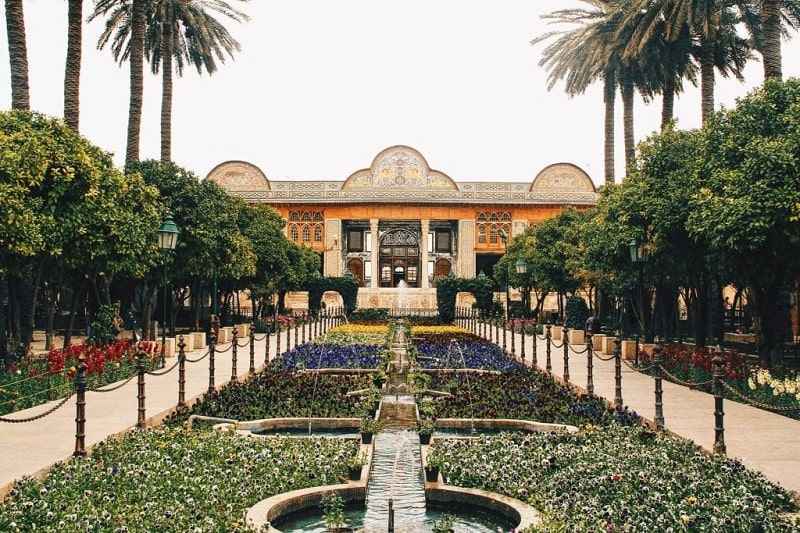
Day 17: Shiraz, Birthplace of Ancient Persian Architecture
- Visiting Shiraz, O/N Shiraz.
- Having an Expedition to Persepolis, Persia Necropolis, Naqsh-e Rajab & Naqsh-e Rustam, Cube of Zoroaster, and Tomb of Saadi.
Persian Literature Tour takes us outside of Shiraz to explore Persepolis. It is one of the three Achaemenid Empire Capitals. Darius the Great constructed the palace and dedicated it to ceremonial events to demonstrate the imperial majesty and eminence. Persepolis with the meaning ‘city of Persians’ is a great example of the Achaemenid architectural style. After that, we will visit Naqsh-e Rustam a necropolis embracing tombs of emperors of Persia in rock cuts. Also, kings have engraved their messages on rock reliefs in the necropolis. In addition, there is a Zoroastrian sacred place “ Cube of Zoroaster ” as a spiritual monument.
Soon after, we will take a short walk to Naqsh-e Rajab, an open-air archaeological archive. Naqsh-e Rajab displays Sassanid imperial impregnable power and triumphs over the Roman emperor on bas-relief inscriptions. Finally, we will touch Sa’diyeh, the mausoleum of a poet whose words and wisdom enlighten your soul. Saadi Shirazi with his global reputation for verses about human rights left us the most valuable heritage by writing books such as Golestan & Bostan.
Overnight Shiraz.
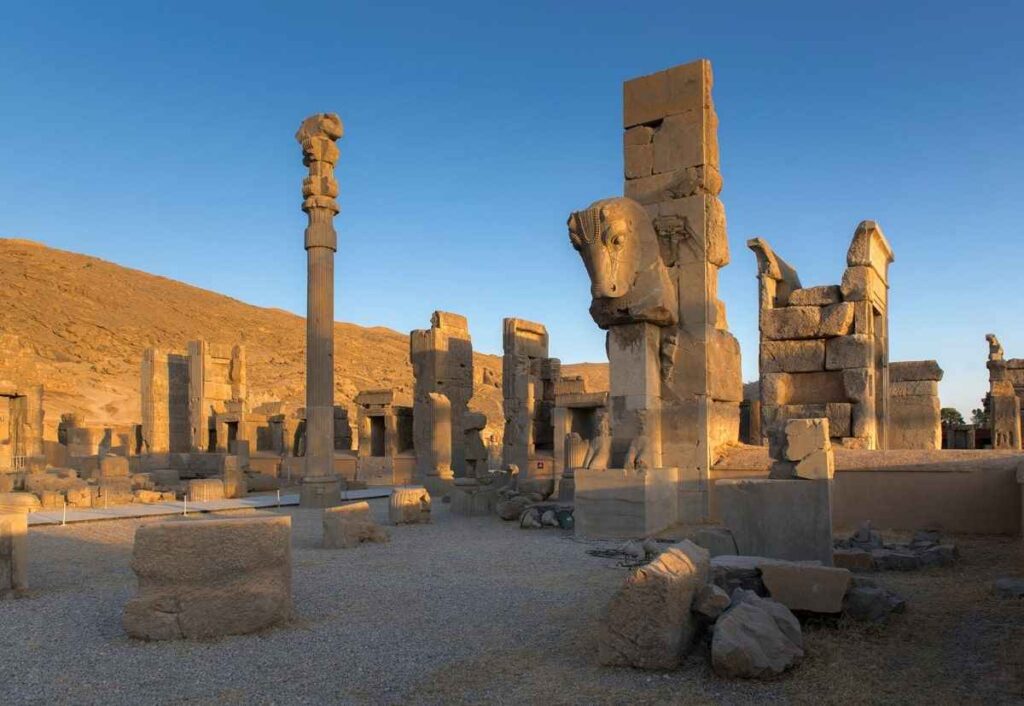
Day 18: Shiraz, Art of Tiles and Mirror Works, Depart Iran
Persian Architecture Tour ends with a visit to Nasir-ol-Molk Mosque. It is a supreme intellectual and artistic sacred place which proves no comparison with the typical mosques. Spirituality lies inside when sunshine passes through the colorful glasses of windows to Persian carpet orchards. Also, the superb ceiling ceramic work surprises tourists in Nasir-al-Molk Mosque. Soon after, we will walk to Zinat Al-Molk House. It is a Persian style of home, to fascinates visitors with the mirror works and woodwork. after that travel to Atiqe Mosque the one that Shirazi call it Adineh too.
Then, we experience Shahcheragh, the third holiest shrine in Iran. It provides visitors with a very sophisticated feeling of spirituality as a reason for its brown color face. Finally, we indulge ourselves in the architecture of Eram Garden (UNESCO Heritage). It is the original meaning of Paradise (Pardis in Persian Language). It displays Persian structures in magnificent buildings and a botanical garden. At the end of the Persian Architecture Tour, we will travel to the Int’l Airport of Shiraz to Depart Iran. (Today, the Persian Architecture Tour operation depends on the time of departure.)
Fly Home.
